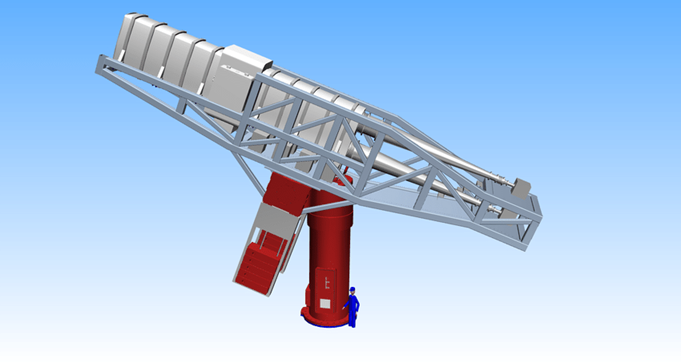The International Axion Observatory is a new generation axion helioscope and its main goal is to detect axions (or other similar particles) potentially emitted by the Sun’s core in large quantities. Axions are hypothetical particles proposed in extensions of the Standard Model of Particle Physics. Their existence in not proved experimentally but there are strong theoretical reasons to suspect it. Also, there is a motivating link with the problem of the Dark Matter of the Universe.
In order to do that, an axion helioscope uses a strong magnetic field to trigger the conversion of axions into detectable photons. The larger and more powerful the magnetic field, the larger the probability the conversion is. IAXO will use a huge 20m long toroidal superconducting magnet, with eight coils and eight 60cm diameter bores placed in between the coils. This magnet will be placed on a moving structure, much like that of a conventional telescope, in order to point the magnet to the Sun.
At the end of the magnet bores, specially built x-ray optics will focus the putative axion-induced photons into small regions (0.2 cm2) at a focal distance of about 5 meters. Each of the focal spots will be imaged by ultra low background x-ray detectors.
As a first step towards IAXO, the collaboration envisages the realization of an intermediate experiment, called BabyIAXO, that will produce relevant physics while preparing the ground for the full infrastructure. BabyIAXO has recently received funding, and has been endorsed by the DESY Physics Review Committee. Steps to build it at DESY are ongoing. The plans are to have BabyIAXO built and under commissioning by 2023.
BabyIAXO will feature a 10-m long superconducting magnet, with two fully equipped detection lines similar to the final IAXO.


